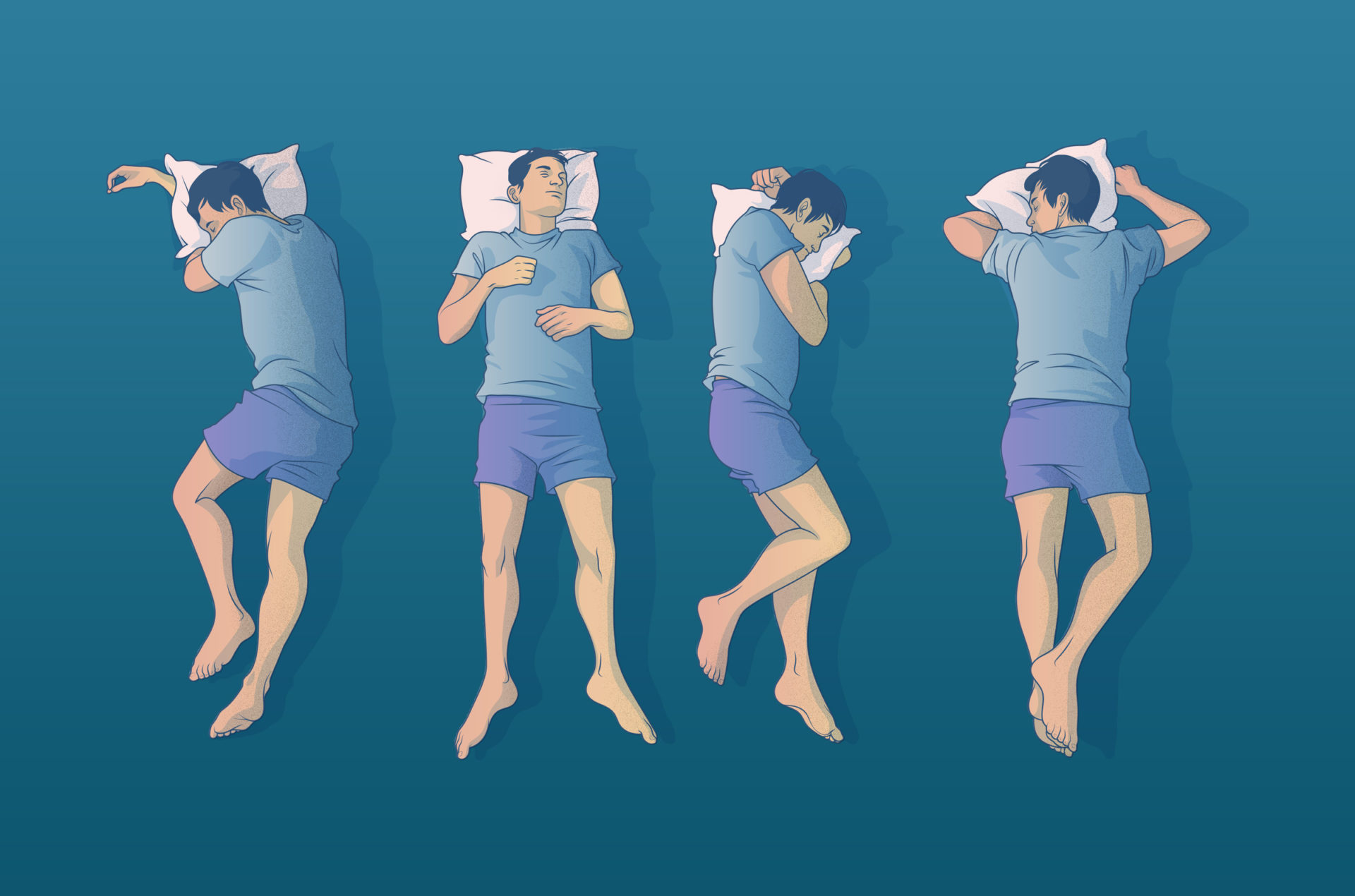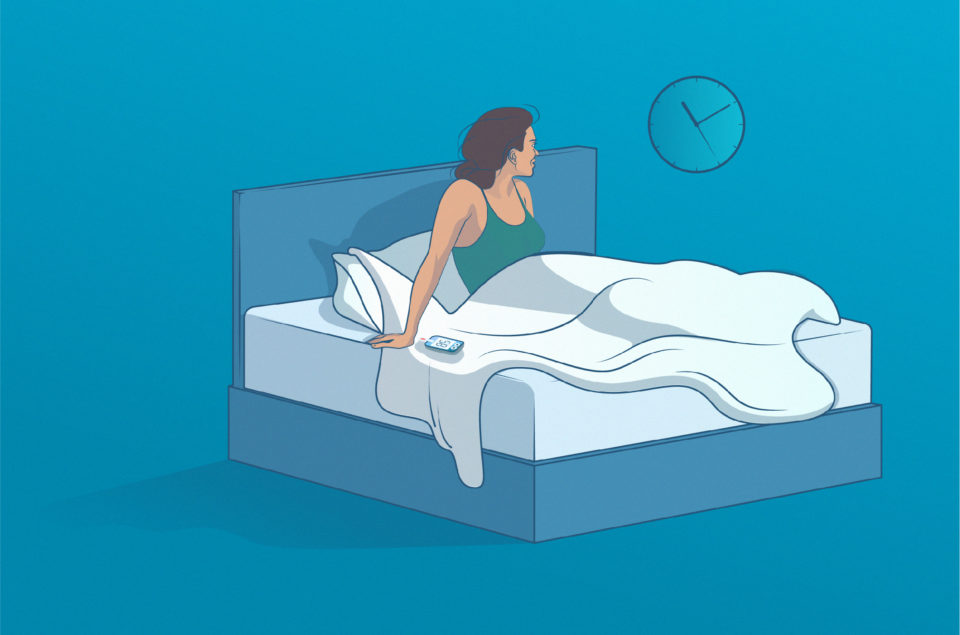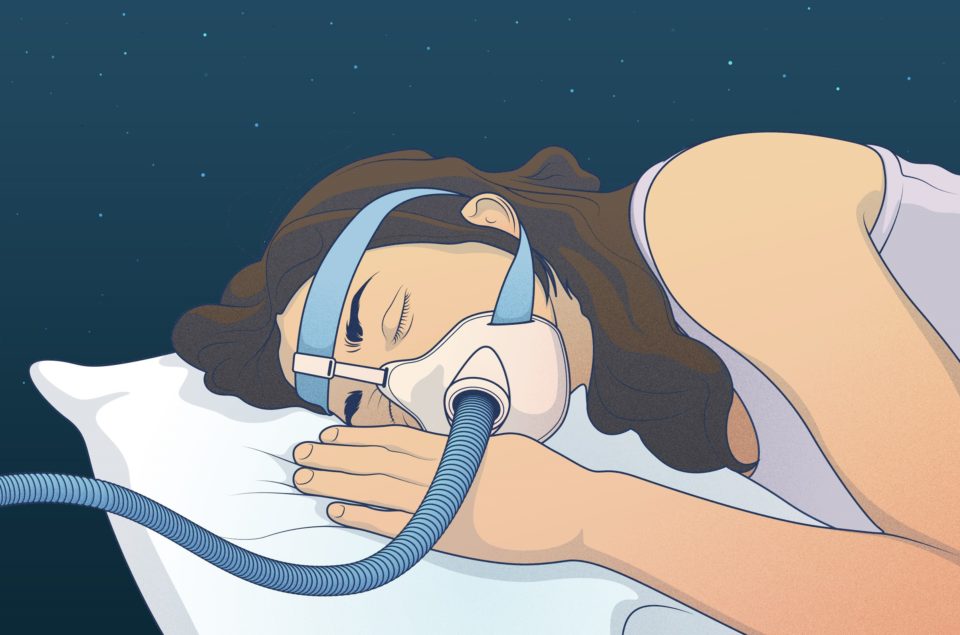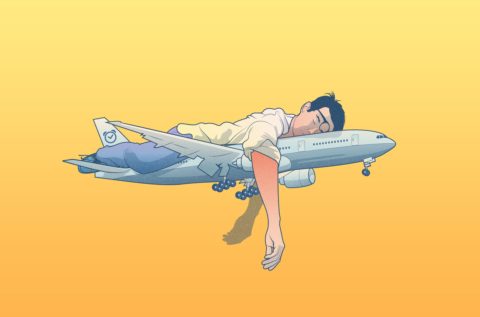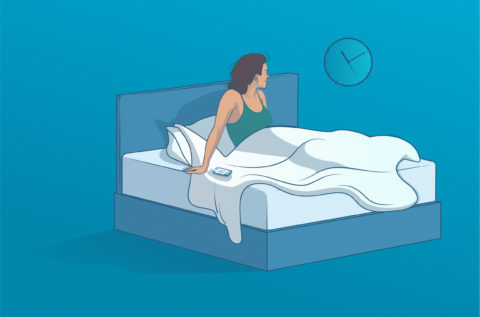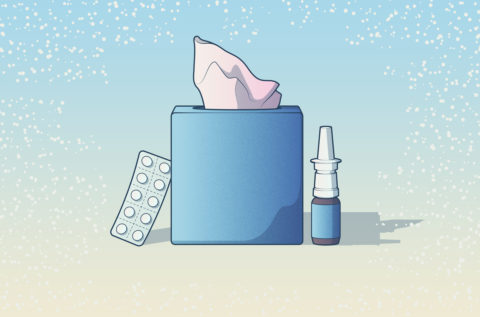Most people have a favorite sleeping position. But for sufferers of sleep apnea (a sleep disorder where breathing stops and starts whilst asleep), finding a comfortable position to sleep in can be a terrible challenge. This is also true for those that also have to sleep with a CPAP machine. Sleep apnea remains one of the most prevalent sleep disorders and affects between 3-7% of men and 2-5% of women in the general population. Understanding those favorable and optimal sleep positions for sleep apnea can make a significant difference when settling down for a good night’s sleep!
What happens during sleep apnea?
There are different types of sleep apnea, the most common being Obstructive Sleep Apnea (OSA). This is when your upper airway is partially or fully obstructed as you sleep. The muscles in the back of your throat relax and cause obstruction while your chest muscles work harder to open your airway. As the brain signals that your breathing is impeded, it can wake you up gasping for air, but as it’s usually so brief you most likely will not remember and may not be aware of your broken sleep.
Symptoms to look out for include:
- Heavy snoring (your partner or family member may be able to alert you if they find it excessive). Sleep tracking apps like Sleep Cycle, with sound & snore detection, can also help with this. You can try it for free for 7 days.
- Waking up with a dry throat, headache or a choking sensation
- Daytime sleepiness and trouble concentrating during daytime
- Sleep deprivation
- Mood swings
- Trouble waking up in the mornings and getting up several times during the night
- High blood pressure
Risks related to Sleep Apnea
As obstructive sleep apnea can lead to excessive daytime sleepiness, this increases the risk of accidents at work or on the road. Untreated OSA is also linked to cardiovascular diseases, hypertension, heart failure and increases the risk of fatty liver disease. Further complications can include eye problems and metabolic disorders. Severe OSA increases the risk of death in middle-aged men. A proper diagnosis and seeking help for the condition is therefore crucially important, yet a majority of those affected remain undiagnosed.
The best sleep positions for sleep apnea
The Better Sleep Council (BSC) in the US, identifies 6 common sleeping positions including variants of sleeping on the side, your back and on your stomach. It’s important to keep mindful of the fact that with severe sleep apnea, a range of treatments could be required. Ranging from controlling the condition through a CPAP machine to an operation. That said, there are physiological advantages to certain sleeping positions, which can help reduce snoring and general symptoms of sleep apnea:
1. Sleeping on the left side
It’s by far the most effective sleep position to help control sleep apnea. It’s considered to encourage blood flow, reduce snoring and calm sleep apnea. In fact, research points out that left side-sleepers experience less severe sleep apnea occurrences.
2. Sleeping on the right side
If sleeping on the left side doesn’t come naturally, opt for the right side, before the back or belly. Both sleeping on the left and right side are preferable because it helps alleviate issues such as gastroesophageal reflux diseases (GERD) which can aggravate sleep apnea symptoms.
3. Sleeping on your stomach (or belly)
This works as gravity pulls the tongue and soft tissue forward, reducing airway obstructions. However, covering your face and mouth with a pillow when sleeping on your stomach can still cause problems for those with severe sleep apnea, so use this position with caution. Also be careful if you suffer from neck problems, as sleeping on your belly might cause unnecessary strain on the neck.
Sleeping on your back (or supine)
Generally considered to be the worst sleeping position. The reason for this is gravity again. Soft tissues in the upper airway, including the tongue, create upper airway resistance. As opposed to when you’re sleeping on your belly when gravity pushes the soft tissues forward. If you are a back-sleeper, and you cannot kick the habit, consider elevating your head to reduce sleep apnea symptoms.
Sleeping positions not making a difference to your sleep apnea? Try CPAP-Mask options
CPAP (Continuous Positive Airway Pressure) treatment is designed to clear the air passage from narrowing during sleep. The treatment with CPAP Machines and masks increases the pressure in the air passage and holds it open, thus preventing the air passage from narrowing or collapsing. If you have been diagnosed with OSA and your physician has identified a need for a CPAP machine with a mask, it’s helpful to understand that you have different mask options depending on whether you sleep on your back, side or stomach. Such as:
- For side sleepers, nasal pillow and nasal CPAP masks are the most convenient as they make movement and flexibility easier whilst not having many facial touchpoints, which is important when part of your face is covered when sleeping on the side.
- For stomach sleepers, the number of touchpoints on the mask needs to be minimal as your face touches the pillow. In this case, a nasal pillow mask paired with a CPAP pillow is ideal.
- For back sleepers, even though it’s the worst position, there’s no limit to the options available, as all masks (full-face, nasal pillow, & nasal masks) will work for this sleeping position.
Prioritize your instincts – Sleep in a position that best adapts your breathing
Ultimately only you can decide the most comfortable sleep position for your sleep apnea. However, understanding the positions that assist or aggravate a sleep apnea condition can be powerful. The first step is to ensure you receive the right treatment if you suspect you have sleep apnea. If you find the symptoms in the checklist above sound familiar, listen to your gut instinct and seek help for what could be a sleep apnea condition. And if it seems to be the case, you know where to turn, to get the best night’s sleep!
